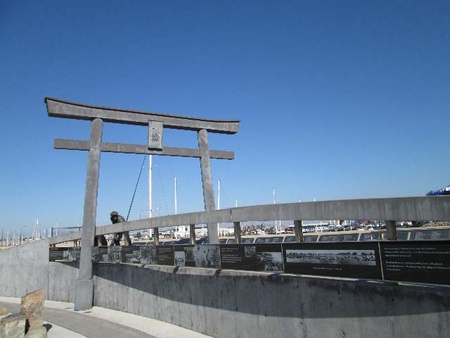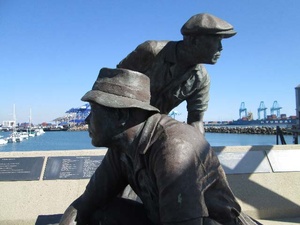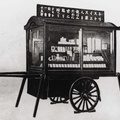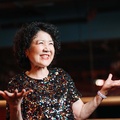Part 1 >>
Minoru Fujiuchi, a second-generation Japanese-American born on Terminal Island, raised in San Pedro, and with roots in Wakayama, spent his time in an internment camp from age 13 to 16. After passing through Santa Anita, his family returned to Los Angeles in September 1945 after the war ended in Amache, Colorado. However, there was nothing left of Fujiuchi's hometown, Terminal Island. The U.S. government had destroyed all the facilities for Japanese fishermen and evacuated them, so that Japanese people would not gather together again.
Fishermen forced to change jobs
The Issei were not allowed to own their own boats, and their fishing licenses were taken away. The Japanese fishermen who had prospered on Terminal Island before the war changed jobs after the war, becoming gardeners or employed in shops.
"The Issei, whose sons had served in the military, were able to take advantage of the newly started housing program and live in Long Beach. The rest of the population, who faced discrimination because they were Japanese and found it difficult to find housing, managed to find housing in nearby San Pedro, Harbor City, and Wilmington, hoping to live close to the hometowns they were familiar with. Some people also moved to Gardena because there was a large Japanese population there."
Fujiuchi's uncle, a fisherman, died before the war, and his only daughter moved to Chicago, so his aunt also left Los Angeles. Fujiuchi's father, who served as an executive of various organizations on Terminal Island, was the first to be spotted by the FBI and arrested as soon as the war began. During the war, the vegetable sales business in the market was replaced by self-service with the times, so the business had to start from scratch after the war.
But even as time passed, those who cherished Terminal Island remained close-knit. Even though they lived far and wide, they continued to reunite for parties and picnics, and in 1971 the Terminal Islanders Club was formed.
"At picnics and parties, you can meet many acquaintances and reminisce about old times. There are 260 official members, 200 people gather for New Year's parties, and about 450 people gather for picnics."
Terminal Islander Club formed
Fujiuchi also made a major contribution to raising funds for the monument that was erected 10 years ago.
"We received a grant of $148,000 from the state, and then worked hard to raise donations ourselves, which raised us about $500,000. With the help of an architect, we built a replica of the torii gate of the shrine that once stood on Terminal Island, and used photographs to recreate the surrounding area to show what it looked like back then. We also included a waka poem by Tatsumi, the former president of the Terminal Islanders Club, on the monument."

The memorial consists of a replica torii gate, a wall with photos and explanations, and a statue of a fisherman.
In fact, when I visited the memorial before speaking with Fujiuchi, this poem touched my heart because it painfully conveyed the feelings of those who had their homes taken away by the war.
"The Kuroshio Current flows offshore, and the fish dance. I remember the hardships of my parents, and I will forever praise this ancient village."
This song is filled with all the scenes of a second generation Japanese who was born and raised on Terminal Island, remembering his parents who struggled as a first generation Japanese, expressing gratitude to his late parents, feeling nostalgic for his hometown, and bringing back memories of the past. When translating the song into English, Fujiuchi recalls that he did not just translate the meaning, but tried his best to express the delicate feelings in English.
"How many times have I been there since the monument was completed? A whole lot. If there are people who want to see it, I organize tours and act as the guide. I sprinkle in stories of my memories from back in the day that can't be conveyed by just touring the monument. I explain, contrasting the scenery with how it used to be, saying things like, "This is the scenery now, but this is how it used to be."
Following on from the orders of the previous president, Tatsumi, Fujiuchi, now 84, is now the president of the Terminal Islanders Club. The current challenge is to make the club a non-profit organization.
"We have given up on the idea of handing over the club to people who know about Terminal Island in the old days because of generational limitations. So we are currently in the process of making the club an official non-profit organization so that we can smoothly hand over the organization to future generations."
The club was originally founded as a place for people to mingle and socialize, but as generations change, its role is now changing. It must now pass on the history of this area, which was once one of the largest Japanese communities in Southern California, to future generations.
If you live near Los Angeles or have the opportunity to visit, please visit the memorial on Terminal Island between Long Beach and San Pedro. You will surely feel the deep sadness of the Terminal Islanders, as well as the gratitude of having a hometown of your own.
© 2013 Keiko Fukuda












